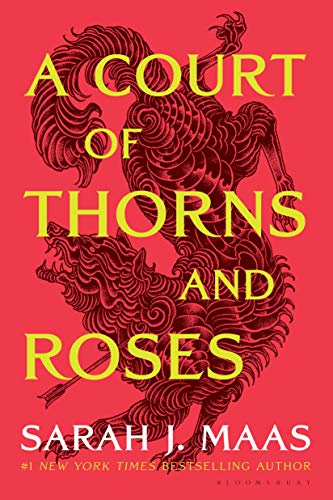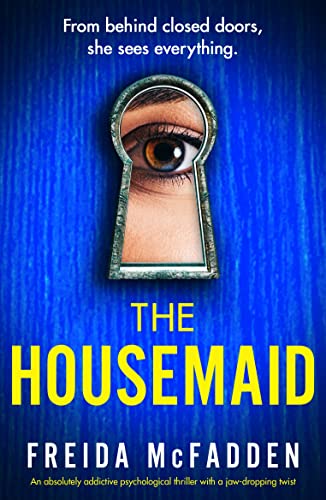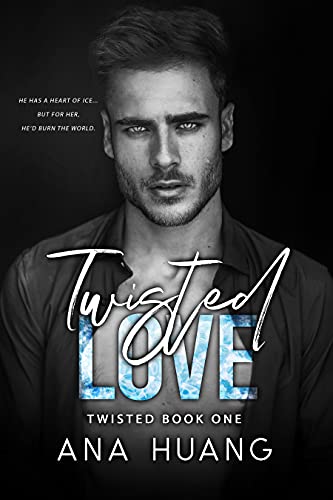
This is the first of a two-part series examining 10 of the best-selling novels of 2023.
Today we’re kicking off a new feature where we’ll be looking at top-selling novels each month to see why they rose to the top of the charts. Authors like to dissect the hallmarks of bestselling books, so we’ll explore what they have in common and how they diverge from the norm.
Our AI analysis tool, Marlowe, analyzes novels across a range of key criteria including narrative arc, story beats, pacing and subject matter. So we went out and purchased hard copies of 10 books that hit the top of the bestseller lists in 2023; some of them were first published years earlier. We then had them scanned in, one by one, at the book scanning service 1 Dollar Scan to abide by legal precedents that permit this type of usage under copyright law. Converted text files in hand, we then fed the documents into Marlowe to get a full report.
As regular readers know, Authors A.I. doesn’t use generative AI but instead shows authors how their manuscript stacks up against bestselling works … like the following. Here, then, are descriptions and AI takeaways of five bestselling novels of 2023:

Click here to see the Marlowe Pro analysis of this novel
1. A Court of Thorns and Roses
By Sarah Maas
Genre: Fantasy
See purchase options on BingeBooks
Claude AI book description
In this fantasy novel, a young human woman named Feyre is forced to live in the land of the Fae after killing one of them. She kills a wolf in the forest, not realizing he is Fae. As punishment according to the treaty between the Fae and humans, Feyre must come to live in the land of the Fae with Tamlin, a powerful Fae lord. Feyre spends time hunting, painting, and getting to know Tamlin, struggling with her feelings for him and her enforced separation from her family. Eventually, she discovers that an evil Fae queen named Amarantha is trying to take over the land, and Feyre makes a dangerous bargain with her to try to save Tamlin and defeat Amarantha.
Marlowe Pro report takeaways
In the Marlowe Pro report, we learn that the book’s archetype is Voyage and Return, an allusion to one of the seven basic narrative arcs. Story beats are well paced, with a crisis or inciting event that takes place very early on and an unusual positive beat followed by an immediate plunge into negative valence territory at the 85%-87% mark. Pacing appears well structured, with no gaping canyons of inaction and plenty of hilltops (my terms, not Marlowe’s). The narrator’s and three main characters’ (Amarantha, Lucien, Tamlin) personality traits look to be varied and distinctive. Dialogue is at 20% vs. 80% narrative, indicating a lot of world building and perhaps action sequences. Fear and joy are the two primary emotional elements detected — an interesting balance. Explicit language is kept to a minimum, with no f-bombs, and explicit content is less than 1%. Cliches are rare and far between.
Reading grade level is 5.76, meaning that 11-year-olds could understand the writing. Novel length is 138,252 words, which is fairly typical in the fantasy genre. Average sentence length is 12.5 words. Sentence complexity score is 2.68 (about average).
Subject matter comp: Daughter of the Blood by Anne Bishop (fantasy).
Writing style comp: The Golem and the Jinni by Helene Wecker (fantasy and historical fiction).

2. The Housemaid
By Freida McFadden
Genre: Thriller
See purchase options on BingeBooks
Claude AI book description
The Housemaid follows a young woman who takes a job as a live-in nanny and housekeeper for a wealthy family to help provide for her own daughter. She moves into their mansion but soon realizes the family, especially the lady of the house Nina, harbors dark secrets. Nina exerts control and emotionally manipulates the protagonist. When Nina’s husband Andrew goes missing, the heroine starts uncovering strange details about his disappearance and suspects foul play by Nina. The situation escalates dangerously when the protagonist finds Andrew locked in the basement near death from dehydration after Nina attempted to kill him. In an intense climax, the heroine must try to free Andrew while protecting herself and her own child from Nina’s volatility and violence.
Marlowe Pro report takeaways
The Housemaid uses the Descent plot archetype, a fairly common story shape for a thriller. To my mind, one of the most important characteristics of a bestseller is the narrative beats component, and the novel pulls off these emotional punches well, with negative beats at the 12%, 28%, 50%, 70% and 91% mark and positive beats at the 21%, 38%, 61% and 77% mark. On the pacing front, there’s a trough at the 17% to 27% mark but otherwise holds up well.
Dialogue is on the low end of the spectrum, 20%, vs. 80% narrative. McFadden sprinkles her work with mild profanities with a handful of f-bombs but no explicit passages in the book. Cliches and repetitive phrases are sparse here. Average sentence length is 9.44 words in the 92,419-word novel (which is typical for the thriller genre). The sentence complexity score comes in at a nice, low 2.42, and the reading level is 4.22, meaning that even fourth graders can pick up the book and start reading.
Subject matter comp: The Nanny Diaries by Emma McLaughlin and Nicola Kraus (women’s fiction).
Writing style comp: Olive Kitteridge by Elizabeth Strout (literary fiction).

3. Lessons in Chemistry
By Bonnie Garmus
Genre: Literary fiction
See purchase options on BingeBooks
BingeBooks book description
Chemist Elizabeth Zott is not your average woman. In fact, Elizabeth Zott would be the first to point out that there is no such thing as an average woman. But it’s the early 1960s and her all-male team at Hastings Research Institute takes an unscientific view of equality. Except for one: Calvin Evans; the lonely, brilliant grudge-holder who falls in love with her mind. True chemistry results. But like science, life is unpredictable. Which is why a few years later Elizabeth Zott finds herself not only a single mother, but the reluctant star of America’s most beloved cooking show Supper at Six. Elizabeth’s unusual approach to cooking (“combine one tablespoon acetic acid with a pinch of sodium chloride”) proves revolutionary. But as her following grows, not everyone is happy. Because as it turns out, Elizabeth Zott isn’t just teaching women to cook. She’s daring them to change the status quo.
Marlowe Pro report takeaways
Marlowe determined that the book’s archetype falls into the Rise and Fall camp, and it fits the contours of that narrative arc — or story shape — nicely. Narrative beats were spaced out perfectly, with positive beats at the 8%, 37%, 60% and 79% marks and negative beats at the 24%, 47%, 70% and 92% marks. Pacing was a bit suspect, with a wide gulf of inaction at the 20% to 30% mark. Elizabeth and Calvin, the two protagonists, had similar 20% “confident” scores in the personality traits graph, not surprising given that they were strong-willed personality types who fell in love with each other.
The novel has a dialogue-heavy tilt to it: 40% dialogue vs. 60% narrative. On the emotional color wheel, Lessons in Chemistry has a larger-than-usual quotient devoted to joy. Surprisingly (at least to me), the novel doesn’t shy away from explicit language, with 19 f-bombs and a liberal sprinkling of other swear words, but the content itself is tame: 0% explicit and only 6.7% suggestive.
Average sentence length is 10.12 words in the 122,527-word novel, hitting a nice sweet spot — especially for a novel that tackled subjects that included advanced chemistry! The sentence complexity score is 2.58, or just about perfect. The reading grade level is 6.31 — again, accessible to readers of all education levels. A note about “misspellings”: Some of the words listed here are no surprise (dibenzoselenophene will probably come up in any spellcheck), while others are due to imperfect scanning and others (naptime) are shortcomings of the open-source dictionary we use.
Subject matter comp: Still Alice by Lisa Genova (women’s fiction and medical fiction).
Writing style comp: My Sister’s Keeper by Jodi Picoult (women’s fiction).

4. Twisted Love
By Ana Huang
Genre: Young Adult Romance
See purchase options on BingeBooks
Claude AI book description
This romance novel follows the relationship between the anonymous narrator and a man named Alex. The narrator has feelings for her childhood friend Josh, but he does not return them. She then meets Alex, whom she has instant chemistry with, and they begin a passionate affair. However, Alex has a dark past involving his ex-fiancée’s death, which he may have been responsible for. The relationship intensifies, but there are signs Alex may be manipulating or “gaslighting” the narrator. She starts to uncover troubling details about him and suspects he was involved in his ex’s death, leading to dramatic conflict. Their turbulent relationship comes to a head amid family turmoil, violence, and the threat of murder charges, culminating in a suspenseful ending.
Marlowe Pro report takeaways
Twisted Love uses the classic Voyage and Return plot archetype. According to Marlowe’s reading of its narrative beats, the novel takes a while to get going: the first negative beat (perhaps the inciting incident) occurs at the 32% mark, and there are only three major negative story beats detected in the novel. Pacing is steady and strong. Personality traits are varied and strong. Dialogue is at 20% with narrative at 80%. Joy made up 20% of the detected emotional components followed by fear, trust and anger. There’s a generous dollop of heartbreak and tears, making up 9% of the subject matter, according to Marlowe.
As with many steamy romance novels, the author has a bit of a potty mouth, with fuck, fucked, fucking or fucker appearing 119 times as well as a whole lot of other expletives. (Bottom line: Know your audience.) Explicit content makes up 4.5% of the novel, Marlowe says.
Median sentence length is 10.65 words with an average sentence complexity score of 2.47 — hitting just the right average. While the reading grade level is 5.37, that score refers to the comprehension level and not to the appropriateness of the content.
Subject matter comp: Haunting Adeline by H. Carlton (gothic romance).
Writing style comp: When I’m Gone by Emily Bleeker (family life fiction).

5. Twenty Years Later
By Charlie Donlea
Genres: Mystery, Thriller
See purchase options on BingeBooks
Claude AI book description
The novel follows Walt Jenkins, a federal agent who survived being shot twice during a case twenty years prior. Now Walt is investigating the apparent suicide of a wealthy college student found hanging in his dorm room. The medical examiner believes it was a murder staged to look like suicide. Walt teams up with medical examiner Avery Lazarre to investigate the suspicious death, which may be connected to Walt’s own near-death experience from twenty years ago. They uncover a dark conspiracy involving a secret society and a corporate coverup, putting their own lives in jeopardy. As events unfold, Walt and Avery attempt to expose the truth and take down the criminal enterprise.
Authors AI report takeaways
As any veteran storyteller knows, unexpected plot twists are one of the most important elements in any dramatic work. It helps propel the plot forward as the characters come to grips with a new reality. Twenty Years Later spaces out its plot twists and turns in a way reminiscent of David Mitchell’s Cloud Atlas, according to Marlowe. Our AI detected three major and three negative narrative beats, which are fewer than usual, but they’re well spaced, with the final conflict beat coming at the 90% mark. Pacing is a slow climb from the start of the novel to the 31% mark. Character traits for Emma and Victoria vary considerably, though the characters Walt and Avery share many of the same personality behaviors. Dialogue takes up 30% of the book with narrative at 70%.
Twenty Years Later comes in at 106,270 words, and the average sentence length 12.15 words — a bit longer than usual. Sentences have a complexity score of 2.62, only slightly higher than the median. The reading grade level was assessed to be 7.19, somewhat higher than the other bestsellers in our sample.
Subject matter comp: Closer Than Blood by Gregg Olsen (thriller)
Writing style comp: The Lions of Lucerne by Brad Thor (thriller)
Next: AI analyses of five more 2023 bestsellers
RUN A FREE A.I. REPORT






